Introduction In today’s digital landscape, compliance with cybersecurity regulations and standards is essential for protecting sensitive data and ensuring business continuity. Navigating the complex landscape of IT compliance can be challenging, but it is crucial for mitigating risks and avoiding legal and financial penalties. This blog post explores the key aspects of cybersecurity and IT compliance, offering insights into the most relevant regulations and standards and strategies for achieving compliance.
1. The Importance of IT Compliance
- Protecting Sensitive Data: Compliance with cybersecurity regulations ensures that sensitive data, such as personal information and financial records, is adequately protected against unauthorized access and breaches.
- Building Trust: Demonstrating compliance with industry standards and regulations builds trust with customers, partners, and stakeholders, enhancing your organization’s reputation and competitive advantage.
- Avoiding Penalties: Non-compliance can result in significant legal and financial penalties, including fines, lawsuits, and damage to the organization’s reputation. Ensuring compliance helps avoid these adverse outcomes.
2. Key Cybersecurity Regulations and Standards
- General Data Protection Regulation (GDPR): GDPR is a comprehensive data protection regulation that applies to organizations operating within the European Union (EU) or handling the data of EU citizens. It mandates strict requirements for data privacy, security, and breach notification.
- California Consumer Privacy Act (CCPA): CCPA is a state-level regulation that grants California residents greater control over their personal data. It requires businesses to implement measures for data protection, transparency, and consumer rights.
- Health Insurance Portability and Accountability Act (HIPAA): HIPAA sets standards for protecting sensitive patient health information in the healthcare industry. It mandates administrative, physical, and technical safeguards to ensure data confidentiality and security.
- Payment Card Industry Data Security Standard (PCI DSS): PCI DSS applies to organizations handling credit card transactions. It outlines requirements for securing cardholder data, including encryption, access controls, and regular security assessments.
- ISO/IEC 27001: ISO/IEC 27001 is an international standard for information security management. It provides a systematic approach to managing sensitive information and ensuring its security through an information security management system (ISMS).
3. Achieving IT Compliance: Best Practices
- Conduct a Risk Assessment: Perform a comprehensive risk assessment to identify and evaluate potential threats and vulnerabilities. Use the findings to prioritize security measures and allocate resources effectively.
- Develop and Implement Policies: Establish clear cybersecurity policies and procedures that align with relevant regulations and standards. Ensure that all employees are aware of and adhere to these policies.
- Data Protection Measures: Implement robust data protection measures, including encryption, access controls, and data loss prevention (DLP) solutions. Regularly review and update these measures to address emerging threats.
- Employee Training and Awareness: Conduct regular training sessions to educate employees about cybersecurity best practices and compliance requirements. Promote a culture of security awareness and accountability.
- Regular Audits and Assessments: Conduct regular audits and assessments to evaluate compliance with regulations and standards. Use the results to identify gaps and implement corrective actions.
- Incident Response Plan: Develop and maintain an incident response plan to address potential security incidents. Ensure that the plan includes procedures for detection, containment, eradication, and recovery.
4. The Role of Technology in IT Compliance
- Compliance Management Tools: Utilize compliance management tools to automate and streamline compliance processes. These tools can help track regulatory changes, manage documentation, and generate compliance reports.
- Security Information and Event Management (SIEM): SIEM solutions aggregate and analyze security data from various sources, providing real-time insights into potential threats and compliance violations.
- Data Encryption and Access Controls: Implement advanced encryption technologies to protect sensitive data at rest and in transit. Use access controls to restrict data access to authorized personnel only.
5. Challenges and Considerations
- Keeping Up with Regulatory Changes: Regulations and standards are continuously evolving. Staying informed about changes and ensuring compliance can be challenging and resource-intensive.
- Balancing Security and Usability: Implementing stringent security measures can impact usability and productivity. Striking the right balance between security and usability is crucial for user acceptance.
- Third-Party Risk Management: Organizations often rely on third-party vendors and partners. Ensuring that these entities comply with relevant regulations and standards is essential for maintaining overall compliance.
6. Case Studies: Successful IT Compliance Strategies
- Company I: A financial services firm implemented a comprehensive compliance management system, automating compliance tracking and reporting. Their proactive approach ensured adherence to multiple regulations, including PCI DSS and GDPR.
- Company J: A healthcare organization developed a robust HIPAA compliance program, incorporating regular risk assessments, employee training, and advanced data protection measures. Their efforts significantly reduced the risk of data breaches and regulatory penalties.
Conclusion Achieving and maintaining IT compliance is essential for protecting sensitive data, building trust, and avoiding legal and financial penalties. By understanding the key regulations and standards, implementing best practices, and leveraging technology, organizations can navigate the complexities of IT compliance and enhance their cybersecurity posture. Continuous efforts to stay informed and proactive in addressing compliance requirements will ensure long-term business security and resilience.



